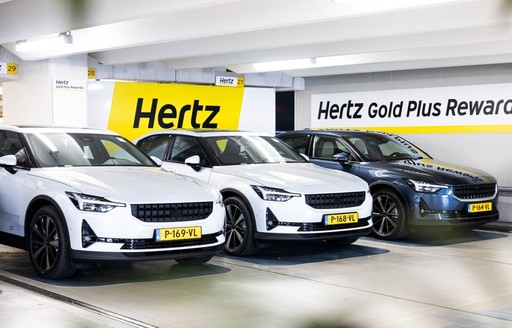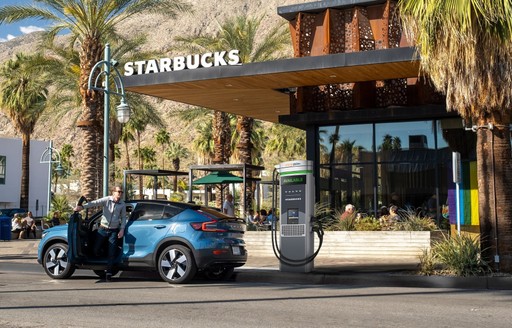This paper, A Generalized Method for Estimating Comprehensive Emissions for Electric Vehicles on a Per Trip Basis, presents a new methodology for estimating per trip GHG emissions for both EVs and equivalent ICEVs, and uses that methodology to produce estimates of total emissions for a representative sample of vehicles across 31,500 routes. Notably, our model takes into account both the well-to-wheel emissions of the fuel or electricity used by a vehicle, and important indirect sources of emissions such as vehicle manufacturing, maintenance, and disposal, which often aren’t included in vehicle emissions reporting standards. When accounted for comprehensively, the estimated emissions of all vehicles were found to be significantly higher than those given by more conventional models. Furthermore, indirect emissions from processes like vehicle manufacturing were found to be higher on average for EVs than for ICEVs. Finally, in regions that relied on fossil fuels for power generation, EV electricity emissions were correspondingly high, meaning that the potential emissions savings of EVs in these regions were lower than might otherwise be expected.
Both total EV emissions and their potential savings over ICEVs were found to be highly variable. Emissions from electricity generation were the most significant factor influencing variation in both total EV emissions and possible savings, with vehicle weight, battery capacity, and average driving speed also major contributing factors. The data also suggest that conventional models of emissions reporting may overestimate the potential savings of EVs by not including important sources of indirect emissions such as vehicle manufacturing and disposal, all of which tended to be higher for EVs than ICEVs. Despite this, EVs were still found to offer emissions reductions over ICEVs on average, and significant reductions in regions with well-developed clean energy infrastructure.
This study finds that both total EV emissions and potential savings over ICEVs are highly variable, and while EVs are less emissions-intensive than ICEVs in many circumstances, the positive impacts of electrification heavily depend on ongoing investment and decarbonization efforts in other sectors, particularly power generation.
Overview
As the effects of anthropogenic climate change become more dire and the need to reduce greenhouse gas emissions more pressing, the development of practical emissions reduction solutions is becoming a higher priority for both policymakers and corporate actors. Within the transportation sector, one of the most popular proposed solutions is the replacement of conventional ICEVs (internal combustion engine vehicles) with EVs (electric vehicles). In 2019, the global transportation sector produced approximately 8.7 billion tons of direct carbon dioxide equivalent (CO2e) emissions, with around 74% of that originating from road vehicles that could theoretically be replaced with more environmentally friendly EVs without significantly disrupting operations. Unlike ICEVs, EVs do not burn fuel to operate, meaning that they don’t produce any direct or “tailpipe” emissions, which at first glance would make them seem like an unambiguously better alternative. However, the idea that EVs don’t produce any emissions is obviously false. The electricity EVs use is generated in power plants that often produce significant amounts of greenhouse gases. Furthermore, manufacturing, maintenance, disposal, and other aspects of the EV lifecycle also produce emissions, which are often higher than those for equivalent ICEVs. (1,2)
What are the emissions implications of EV adoption when all these often-ignored factors are taken into account? In A Generalized Method for Estimating Comprehensive Emissions for Electric Vehicles on a Per Trip Basis we explore this topic in detail. We develop a more comprehensive model of EV and ICEV emissions, test the model using a representative sample of vehicles and routes, and analyze the results. Ultimately, we conclude that most other models tended to overestimate the potential emissions savings of EVs over ICEVs, as they did not account for significant sources of indirect emissions, which tended to be higher for EVs than for ICEVs. However, even when emissions were accounted for more comprehensively, we found that EVs still tended to be less emissions-intensive to operate than ICEVs on average. That said, our model’s estimates of EV and ICEV emissions varied significantly between different vehicles, route types, and especially regions, suggesting that use case is a very important factor in determining the potential emissions impacts of EV adoption.
Methodology
Those who wish to read a comprehensive description of the model used in this study should refer to Sections 3 and 4 of the full paper, which provide detailed explanations of the methods used to estimate EV and ICEV emissions, respectively. To summarize, we categorize total emissions for both EVs and ICEVs into three major types: embedded, operational, and end-of-life. Embedded emissions arise from vehicle manufacturing and the transportation of the vehicle to the end user. Operational emissions include those from the production, transport, and consumption of the fuel or electricity used by a vehicle, as well as emissions related to vehicle maintenance and repair, and those associated with the construction and upkeep of the road infrastructure the vehicle utilizes. Finally, end-of-life emissions pertain to the decommissioning and disposal of the vehicle and all its components. The total emissions for a given route are calculated by summing these categories.
To assess this model, 20 routes were evaluated in each of 14 regions across the US and Europe during both summer and winter conditions for a set of 75 representative vehicles, resulting in a total of 42,000 routes tested. A complete account of the results from these tests can be found in Section 6 of the full paper, with further analysis of the model and its output in Section 5. A summary of some of the more relevant results is provided below. It should be noted that this model is deliberately pessimistic, using high or worst-case estimates for many aspects of EV lifecycle emissions, and therefore is likely to produce overestimates of total EV emissions and underestimates of emissions savings for many routes. Furthermore, the sample of vehicles was chosen to reflect as broad a range of vehicles as possible and is not representative of average vehicle characteristics.
EV Emissions
For the top five European countries and U.S. states by GDP, EVs were estimated to have produced around 244.7 gCO2e per kilometer driven on average. This value was lower on average in Europe (241.2 gCO2e/km) than in the U.S. (248.2 gCO2e/km). However, this varied significantly depending on the vehicle, the route, and the region in which the route was calculated. On average, the largest single source of emissions for EVs was electricity (43.9% of the total), about a quarter of which came from electricity lost at various stages of the transmission and charging process (Figure 1). A further 25.5% of total emissions resulted from vehicle manufacturing, with slightly less than a third of these emissions stemming from the production of the EV’s battery on average. End-of-life emissions were a major contributor to total emissions, accounting for 16.3% of the total.
In contrast, road infrastructure, vehicle maintenance, and distribution were relatively insignificant compared to the other categories. Routes driven during the winter were estimated to produce significantly more emissions than those driven in the summer (Figure 2). This is because EVs tend to operate less efficiently in cold temperatures, resulting in higher projected electricity consumption (and thus higher electricity emissions) for winter routes. Notably, this suggests our results are likely overly pessimistic in warmer climates where the winter temperatures used in this study (-10 °C) are not representative.

There were notable differences in EV emissions between different types of routes (Figure 3), with rural routes having slightly lower estimated emissions than suburban routes, which in turn had significantly lower emissions than urban routes. The primary cause of this discrepancy was electricity emissions, which were higher for routes with lower average speeds. This is because EVs tend to operate less efficiently at lower speeds, resulting in greater electricity consumption per kilometer driven, and consequently, higher emissions.
Figure 4 shows average EV emissions by European country or US state. Every category of emissions, except for manufacturing and end-of-life, varied somewhat between regions; however, electricity emissions were by far the most significant source of discrepancy. This was primarily due to differences in power generation infrastructure among regions. In areas with more developed clean energy infrastructure (e.g., Sweden and France), electricity is significantly less emissions-intensive to produce on a per kWh basis than in regions that rely heavily on fossil fuels for power generation (e.g., West Virginia and Poland), leading to correspondingly lower emissions.

Figure 5 shows average EV emissions by EU vehicle segment as well as for cargo vans of different sizes (Small, Medium, Large, and Extra Large). Every category of emissions varied between vehicle classes, with manufacturing, maintenance, and end-of-life emissions increasing as battery capacity increased. At the same time, all categories of emissions except electricity also increased with vehicle weight. Larger vehicles also tended to have higher electricity emissions than smaller vehicles due to their lower average electricity efficiency. Overall, smaller vehicles with lower-capacity batteries tended to be much less emissions-intensive to operate than larger vehicles with higher-capacity batteries, as might be expected.

ICEV Emissions
Gasoline ICEV emissions were estimated to be higher on average than those of corresponding EVs, with a mean value of 292.4 gCO2e/km in the top five European and U.S. economies. This value was significantly higher in Europe (326.3 gCO2e/km) than in the U.S. (258.6 gCO2e/km). Diesel ICEVs were estimated to have lower average emissions per kilometer, with a combined average of 256.9 gCO2e/km (269.6 in Europe and 244.2 in the U.S.). However, as with EVs, there was significant variance in emissions between route types, vehicles, and regions.
Across all routes tested, emissions from fuel were both higher overall and constituted a larger proportion of total emissions for both gasoline (67.5%) and diesel (63.0%) ICEVs than electricity did for EVs (45.2%) on average. Emissions from all other categories, however, were both a smaller proportion of total emissions and lower overall for ICEVs than for EVs (Figures 6 and 7), except vehicle maintenance, which was slightly higher. This was because the production and consumption of fuel is much more emission-intensive than that of electricity, driving up fuel emissions. Additionally, the ICEV lifecycle does not include the production or disposal of large batteries, which are all fairly emissions-intensive processes, leading to a decrease in all other categories of emissions. ICEVs are also slightly lighter on average than EVs, resulting in lower transportation and induced road maintenance emissions.

Similar to EVs, there was a strong correlation between average speed and total ICEV emissions, although the distribution varied between gasoline and diesel ICEVs. Significant differences in average ICEV emissions existed between vehicles of different classes (Figure 8). Several factors contributed to these differences, with the most important being estimated fuel efficiency, which played a significantly more crucial role than electricity efficiency in EVs. Vehicle weight was also a key factor, with increases in weight directly causing corresponding increases in emissions from manufacturing, distribution, maintenance, road infrastructure, and end-of-life stages. Overall, smaller vehicles with less powerful engines tend to produce lower emissions, with diesel vehicles emitting less than their gasoline counterparts, as might be expected.

Vehicle Emissions Comparison
On average, EVs are estimated to produce fewer emissions than their gasoline counterparts, with a combined average emissions savings of 47.8 gCO2e/km, 85.1 gCO2e/km for routes in Europe, and 10.5 gCO2e/km in the U.S. EVs also tend to emit less than their diesel counterparts on average; however, the difference is less pronounced, with an average estimated emissions savings of 12.3 gCO2e/km across all routes tested, 28.4 gCO2e/km in Europe, and -3.9 gCO2e/km in the top five U.S. states by GDP. As might be expected, given the nature of EV and ICEV emissions, potential savings vary significantly depending on the region, the vehicle, and the route.
For all categories of emissions except electricity/fuel (and maintenance, although this difference was trivial), ICEVs are estimated to produce lower emissions than EVs (Figure 9). Therefore, the potential savings of EVs over ICEVs depend on the emissions from the production of an EV’s electricity being significantly lower than the emissions from the production and consumption of the equivalent ICEV’s fuel. In regions with well-developed clean energy infrastructure, this discrepancy was found to be large enough to produce significant savings (for example, EVs were estimated to have saved an average of 44.9% over gasoline ICEVs and 31.3% over diesels across all routes in France). However, in regions that heavily rely on coal or other fossil fuels for power generation, while EV electricity emissions are usually still lower than the corresponding ICEV fuel emissions on average, the difference between them is not always sufficient to yield significant or even positive savings.
Estimated emissions savings are higher for rural routes than for suburban and urban routes (Figure 10), likely because electric vehicles (EVs) typically operate more efficiently at higher speeds, resulting in lower electricity consumption and higher relative savings.

Savings also varied between regions, with five regions producing positive savings for both gasoline and diesel vehicles and two producing negative savings for both (Figure 11). This was primarily due to the emissions factor of electricity in these regions, with areas such as West Virginia and Poland (which rely heavily on coal power plants for electricity generation) producing lower savings than regions with more developed green energy infrastructure, such as Sweden and France. Since the discrepancy in fuel/electricity emissions is the determining factor for emissions savings, regional differences in the emissions intensity of electricity were the primary cause of the significant variance in savings between regions. Finally, Figure 12 compares the total per-kilometer emissions savings produced by the model used in this study to the values generated by other, less comprehensive estimates. As can be seen, the different models produced much higher estimates of emissions savings between EVs and ICEVs. This discrepancy is because these models do not account for embedded, end-of-life, or operational emissions, except for fuel/electricity. Emissions in all these categories were higher for EVs than for ICEVs on average, so excluding them tends to produce higher and potentially overly optimistic estimates of emissions savings.

Implications
The data from the current iteration of the model suggest that the emissions impacts of EVs are highly variable. The characteristics of a given EV, the type of ICEV it replaces, the route's characteristics, and especially the emissions factor of the electricity used, can lead to significant differences in potential emissions savings between routes. Given this variance, the average values presented in this paper, although helpful in understanding broad trends across the sample, are unlikely to accurately reflect the emissions impacts of specific electric vehicles (EVs). That said, while conventional vehicle emissions models may overstate the potential benefits of EVs, even when emissions were estimated using a less optimistic comprehensive model, EVs were still found to produce emissions savings on average compared to equivalent ICEVs, most notably in regions with well-developed clean energy infrastructure. Furthermore, because electricity emissions were the primary factor in determining emissions savings, EVs have the potential to produce significantly greater emissions savings in the future as investment in clean energy infrastructure lowers the average emissions intensity of electricity.
However, there is a more sobering side to this data. Even the best-case emissions savings identified in this study were still insufficient to meet the IPCC's 1.5°C emissions reduction target for 2035 or its 2°C target for 2050. While our estimates of emissions savings were deliberately conservative, the electrification of road vehicles may not be sufficient to meet our longer-term emissions reduction goals on its own, and additional investments in both clean energy generation and less emissions-intensive forms of overland transport are likely necessary to achieve our long-term decarbonization goals.
End of abstract. Request a copy of the full paper below.





























